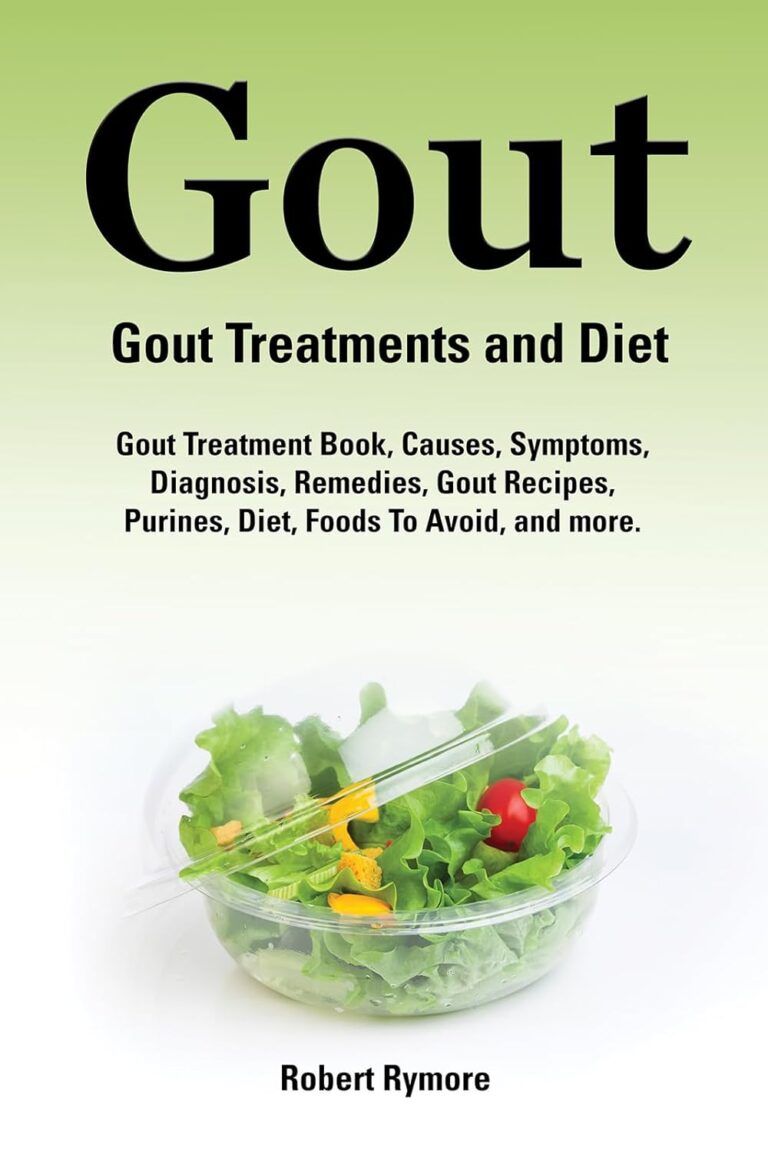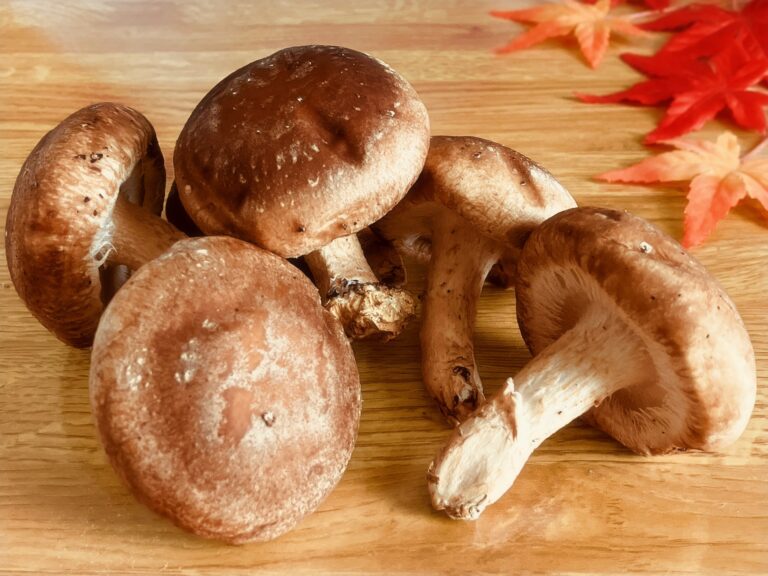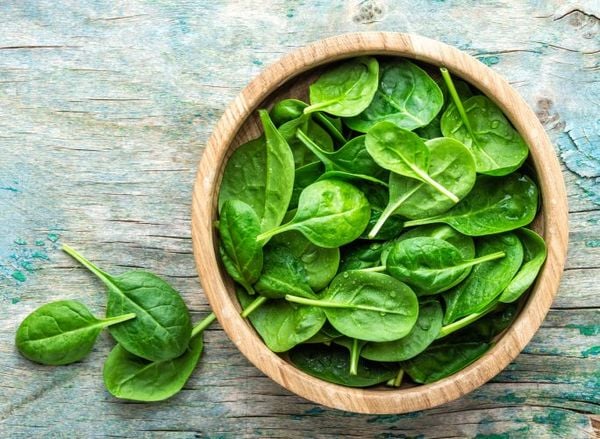Is Cumin the New Superfood? Unearthing the Ancient Spice’s Modern Promise
In a world perpetually on the hunt for the next nutritional marvel, the superfood landscape is a vibrant, ever-shifting tapestry. From acai berries to chia seeds, kale to spirulina, each contender promises a unique array of health benefits, often accompanied by exotic origins and compelling narratives. Yet, sometimes, the most profound revelations lie not in distant lands or obscure botanicals, but within the familiar, the humble, and the historically underestimated. Enter Cuminum cyminum, or simply cumin – a spice so ubiquitous it often fades into the background, a silent workhorse in kitchens across the globe.
For millennia, cumin has graced our tables and tinctures, valued for its distinctive earthy aroma and its role in traditional medicine. But now, as scientific inquiry increasingly turns its gaze towards the botanical kingdom, this unassuming seed is experiencing a renaissance, its ancient wisdom being rigorously tested under the modern microscope. Could this humble spice, once relegated to flavor enhancer, be poised to claim its place among the elite ranks of superfoods? This is not merely a question of culinary trend, but a deeper exploration into the complex interplay of phytochemistry, human physiology, and the enduring power of natural remedies. Join us on a journey to unravel the story of cumin, from its ancient roots to its burgeoning scientific validation, to discern whether it truly embodies the promise of the next great superfood.
The Echoes of Antiquity: Cumin’s Storied Past and Global Footprint
Before delving into the molecular intricacies that underpin cumin’s potential, it is essential to appreciate its profound historical significance. Cumin is not a newcomer to human civilization; its lineage stretches back thousands of years, interwoven with the very fabric of human culture, commerce, and healing.
Archaeological evidence points to cumin’s use in ancient Egypt, where seeds have been unearthed in tombs, including that of Tutankhamun. Beyond its use as a culinary ingredient to flavor bread and meat, the Egyptians also recognized its preservative qualities, employing it in mummification rituals. From the Nile Valley, its influence spread across the Mediterranean. The ancient Greeks and Romans held cumin in high regard, using it not only in their extensive culinary repertoire but also as a medicinal herb and even a cosmetic. Pliny the Elder, the Roman naturalist, detailed its various therapeutic applications in his encyclopedic work, "Naturalis Historia."
However, it was in the vibrant cultures of the Middle East, India, and North Africa where cumin truly blossomed, becoming an indispensable staple. In India, it is a cornerstone of Ayurvedic medicine, revered for its digestive properties and its ability to balance the body’s doshas. Known as "Jeera" in Hindi, it has been prescribed for everything from indigestion and diarrhea to fevers and insomnia for centuries. Similarly, in Unani medicine, an ancient system of healing practiced in the Middle East and South Asia, cumin is considered a "hot" spice, used to stimulate digestion and purify the blood. Its journey along the Silk Road introduced it to China, where it found a place in traditional Chinese medicine, valued for its warming properties and ability to regulate qi.
The Arab world, in particular, became a crucial conduit for cumin’s global dissemination. Arab traders carried the spice across vast distances, introducing it to new cultures and continents. It became a defining flavor in North African tagines, Middle Eastern mezze, and Mexican moles (brought by Spanish conquistadors). Its deep, earthy notes became synonymous with the rich tapestry of these cuisines, often paired with other potent spices like coriander, turmeric, and chili.
What is striking about cumin’s historical narrative is its consistent dual role: a culinary enhancer and a medicinal agent. For millennia, these two functions were not separate but intrinsically linked, reflecting a holistic understanding of food as medicine. This historical reverence, however, was largely based on empirical observation and anecdotal evidence. Today, the scientific community is meticulously peeling back these layers of tradition, seeking to validate these ancient claims with the rigorous methodologies of modern research. This transition from folklore to pharmacology marks the beginning of cumin’s potential ascent into the superfood pantheon.
Deconstructing the Spice: The Phytochemical Symphony of Cumin
To understand why cumin is generating such excitement, we must look beyond its aromatic qualities and delve into its intricate biochemistry. The health benefits attributed to cumin are not the work of a single "magic bullet" compound, but rather the result of a complex interplay – a "phytochemical symphony" – of various bioactive molecules working in concert.
The dominant compounds responsible for cumin’s characteristic flavor and much of its biological activity are its volatile oils, particularly cuminaldehyde. This monoterpene aldehyde can constitute anywhere from 25% to 50% of cumin essential oil and is a primary focus of scientific research due to its potent antioxidant, anti-inflammatory, and antimicrobial properties.
Beyond cuminaldehyde, cumin essential oil also contains other significant terpenes and terpenoids, including:
- Cymene: Another monoterpene found in high concentrations, contributing to the spicy-woody aroma and exhibiting anti-inflammatory effects.
- Beta-Pinene and Gamma-Terpinene: These compounds are also present, known for their roles in other aromatic plants and contributing to cumin’s complex scent profile and potential biological activities.
- Limonene: A common terpene with recognized antioxidant and anti-inflammatory properties, often associated with citrus fruits.
However, cumin’s nutritional power extends far beyond its essential oils. The whole seed is a rich source of other vital components:
- Flavonoids: These are a class of polyphenolic compounds renowned for their powerful antioxidant and anti-inflammatory capabilities. Key flavonoids identified in cumin include apigenin and luteolin. These molecules help neutralize harmful free radicals, protecting cells from oxidative damage, which is a precursor to many chronic diseases.
- Polyphenols: A broader category of plant compounds, including phenolic acids, which contribute significantly to cumin’s antioxidant capacity. These compounds play crucial roles in modulating various cellular pathways involved in inflammation, metabolism, and detoxification.
- Dietary Fiber: Cumin seeds are a good source of fiber, essential for digestive health, promoting regular bowel movements, and contributing to satiety.
- Minerals: It is a surprisingly potent source of essential minerals, particularly iron and manganese. Iron is vital for oxygen transport and energy production, while manganese is a co-factor for numerous enzymes involved in metabolism, antioxidant defense, and bone health. Other trace minerals like calcium, magnesium, and zinc are also present.
- Vitamins: While not a primary source, cumin contains small amounts of B vitamins and vitamin E, further contributing to its nutritional profile.
The beauty of whole foods like cumin lies in this synergistic effect. While isolated compounds like cuminaldehyde show promise, the collective action of all these phytochemicals, fiber, and micronutrients often produces a more profound and balanced effect than any single component could achieve on its own. This intricate dance of molecules is what makes cumin a compelling subject for superfood status – not just for its presence of beneficial compounds, but for the sophisticated way they interact within the human body.
The Health Frontier: Unpacking Cumin’s Potential Benefits
The scientific investigation into cumin has moved beyond mere identification of its components to rigorously testing their effects on human health. While much of the research is still in its early stages, particularly human clinical trials, the cumulative evidence from in vitro, animal, and initial human studies paints a compelling picture of cumin’s therapeutic potential.
1. Metabolic Health and Weight Management
Perhaps one of the most exciting areas of research surrounds cumin’s impact on metabolic health, a critical concern in an era of rising obesity, diabetes, and cardiovascular disease.
- Blood Sugar Control: Several studies suggest cumin may play a role in regulating blood glucose levels. Animal studies have shown that cumin extract can reduce blood sugar in diabetic models by improving insulin sensitivity and potentially reducing glucose absorption from the gut. Human trials, though limited, have also indicated similar trends. A study published in the journal "Phytotherapy Research" showed that cumin supplementation significantly improved insulin sensitivity and reduced fasting blood glucose in overweight and obese women with polycystic ovary syndrome (PCOS), a condition often linked to insulin resistance.
- Cholesterol and Lipids: Cumin has demonstrated a notable ability to modulate lipid profiles. Research consistently shows a reduction in total cholesterol, "bad" LDL cholesterol, and triglycerides, while often increasing "good" HDL cholesterol. The mechanisms are thought to involve inhibiting cholesterol synthesis in the liver and increasing the excretion of bile acids, which are made from cholesterol. This makes cumin a potential ally in the fight against atherosclerosis and heart disease.
- Weight Loss: This is where cumin has garnered significant attention. A groundbreaking human clinical trial published in "Complementary Therapies in Clinical Practice" found that overweight and obese women who consumed cumin powder daily for three months experienced significant reductions in weight, BMI, waist circumference, and body fat percentage compared to a placebo group. The proposed mechanisms include enhanced thermogenesis (the body’s heat production, burning more calories), improved fat metabolism, and potentially a role in appetite suppression, though more research is needed to fully elucidate these pathways.
2. Digestive Wellness
Cumin’s traditional use as a digestive aid is now finding scientific backing.
- Stimulating Digestion: Cumin seeds are known to stimulate the secretion of pancreatic enzymes, which are crucial for the breakdown of fats, carbohydrates, and proteins in the gut. This can lead to more efficient digestion and nutrient absorption.
- Anti-spasmodic Properties: The compounds in cumin, particularly cuminaldehyde, exhibit anti-spasmodic effects, meaning they can relax the smooth muscles of the digestive tract. This can alleviate symptoms like bloating, gas, and abdominal cramps, making it potentially beneficial for conditions like Irritable Bowel Syndrome (IBS).
- Protection of Gut Lining: Early research suggests cumin may help protect the integrity of the gut lining, which is vital for preventing "leaky gut" syndrome and supporting overall digestive health.
3. Antioxidant and Anti-inflammatory Powerhouse
The high concentration of flavonoids, polyphenols, and other bioactive compounds in cumin makes it a formidable antioxidant and anti-inflammatory agent.
- Free Radical Scavenging: Cumin effectively neutralizes reactive oxygen species (free radicals) that cause oxidative stress, a key contributor to aging and numerous chronic diseases, including cancer, heart disease, and neurodegenerative disorders.
- Modulating Inflammatory Pathways: Research indicates that cumin can modulate key inflammatory pathways, such as the COX-2 pathway (targeted by NSAIDs) and the production of pro-inflammatory cytokines. By dampening chronic inflammation, cumin could offer protective effects against a wide array of inflammatory conditions.
4. Cognitive Function and Neuroprotection
Emerging research points to cumin’s potential benefits for brain health, largely due to its antioxidant and anti-inflammatory effects.
- Memory Enhancement: Animal studies have shown that cumin extract can improve memory and learning abilities, particularly in models of stress-induced cognitive impairment. This is thought to be related to its ability to reduce oxidative stress in the brain and protect neuronal cells.
- Neuroprotective Effects: The antioxidant properties of cumin may offer protection against neurodegenerative diseases like Alzheimer’s and Parkinson’s by safeguarding brain cells from damage and reducing inflammation in neural tissues. While promising, human trials are needed to confirm these effects.
5. Antimicrobial and Immunomodulatory Effects
Cumin’s traditional use in treating infections is also gaining scientific validation.
- Antibacterial and Antifungal: Studies have demonstrated cumin essential oil’s ability to inhibit the growth of various pathogenic bacteria, including E. coli and Staphylococcus aureus, as well as certain fungi. This could be beneficial in food preservation and as a natural antimicrobial agent.
- Immunomodulation: Cumin appears to influence the immune system, enhancing certain aspects of immune response while potentially dampening excessive inflammation, suggesting a role in maintaining immune balance.
6. Anti-Cancer Potential (Early Research)
While highly preliminary and mostly conducted in vitro (test tube) and in animal models, some studies have investigated cumin’s anti-cancer properties.
- Antiproliferative Effects: Cumin compounds have shown the ability to inhibit the proliferation of various cancer cell lines, including colon, breast, and liver cancer cells.
- Pro-apoptotic Effects: They may also induce apoptosis (programmed cell death) in cancer cells, a crucial mechanism for preventing tumor growth.
- Chemopreventive Potential: Some research suggests cumin may have chemopreventive properties, helping to prevent the initiation or progression of cancer, particularly in the gastrointestinal tract.
It is crucial to emphasize that these anti-cancer findings are in very early stages and do not suggest cumin as a treatment for cancer in humans. However, they highlight an area of significant future research interest.
The breadth of these potential benefits – spanning metabolic health, digestion, inflammation, cognition, and even immune function – makes a compelling case for cumin’s designation as a superfood. It’s not a one-trick pony, but a versatile botanical offering a holistic approach to wellness.
From Lab to Table: Integrating Cumin into a Modern Diet
For the knowledgeable audience, the transition from scientific discovery to practical application is key. If cumin truly holds such promise, how can one effectively integrate it into a healthy diet beyond its traditional roles? The good news is that cumin is incredibly versatile and readily available, making it an accessible superfood for most.
Cumin is available in several forms, each offering slightly different culinary and nutritional nuances:
- Whole Seeds: These are the most potent and aromatic form. To maximize their flavor and release their beneficial oils, whole seeds are often toasted lightly in a dry pan before grinding or adding to dishes. This process, known as "blooming," intensifies their earthy, nutty notes. Use whole seeds in curries, stews, roasted vegetables, rice dishes, or infuse them in oils.
- Ground Cumin: This is the most convenient form, offering a quicker release of flavor. It’s ideal for rubs, marinades, salad dressings, and as a finishing spice. However, ground spices lose their potency faster than whole seeds, so it’s best to buy in smaller quantities or grind your own from whole seeds for maximum freshness.
- Cumin Essential Oil: While scientifically interesting, cumin essential oil is highly concentrated and should not be ingested without expert guidance. Its use is primarily limited to aromatherapy or specialized therapeutic applications under professional supervision due to its potency and potential for adverse effects. For dietary purposes, stick to the whole spice.
Culinary Applications for Enhanced Health:
- Morning Boost: A simple and effective way to incorporate cumin is by steeping a teaspoon of whole seeds in hot water for 5-10 minutes, then straining and drinking as a digestive tonic. Some also add a pinch of ground cumin to their morning smoothie.
- Everyday Cooking: Sprinkle ground cumin into scrambled eggs, omelets, or avocado toast. Add it to soups, lentil dishes (dal), bean stews, chili, and vegetarian curries.
- Roasting: Toss whole or ground cumin with vegetables like carrots, cauliflower, potatoes, or chickpeas before roasting for a deeply flavorful and healthy side.
- Marinades and Rubs: Cumin is a fantastic base for meat or plant-based protein marinades, pairing beautifully with garlic, ginger, turmeric, and chili.
- Dressings and Dips: Whisk ground cumin into vinaigrettes, yogurt-based dips (like raita), or hummus for an added layer of flavor and health benefits.
- Bread and Baked Goods: Incorporate whole cumin seeds into homemade bread, savory muffins, or crackers.
Synergistic Pairings: Cumin often shines brightest when paired with other beneficial spices. Turmeric, black pepper (which enhances turmeric’s bioavailability), coriander, and ginger not only create complex flavor profiles but also contribute their own impressive array of health-promoting compounds, creating a powerful nutritional synergy. For instance, a classic Indian dal combining lentils, turmeric, cumin, and ginger is a nutritional powerhouse.
By consciously integrating cumin into daily meals, individuals can effortlessly elevate both the flavor and the nutritional density of their diet, moving beyond supplement reliance towards a food-first approach to wellness.
The Superfood Scrutiny: Nuances, Caveats, and Responsible Consumption
While the evidence for cumin’s health benefits is compelling, a knowledgeable audience understands that no "superfood" is a magic bullet, and critical scrutiny is essential. As with any potent natural substance, nuances, caveats, and considerations for responsible consumption are paramount.
1. Dosage and Bioavailability
- Culinary vs. Therapeutic Doses: Most human studies demonstrating significant effects on metabolic parameters or weight loss have used doses ranging from 75 mg of extract to 3 grams of ground cumin powder daily. While culinary use provides some benefit, the quantity typically consumed in a meal (e.g., a pinch or half a teaspoon) might be lower than the therapeutic doses used in research. This doesn’t negate the benefits of culinary use but suggests that for specific health outcomes, more consistent and possibly higher intake might be necessary.
- Bioavailability: The absorption and utilization of cumin’s bioactive compounds can vary. Factors like the food matrix, individual gut microbiome, and preparation methods (e.g., toasting seeds) can influence how effectively these compounds are absorbed into the bloodstream.
2. Potential Drug Interactions
Cumin, due to its potent physiological effects, could potentially interact with certain medications:
- Anticoagulants (Blood Thinners): Cumin has demonstrated anti-platelet activity in some studies, meaning it could potentially enhance the effects of blood-thinning medications like warfarin, increasing the risk of bleeding. Individuals on such medications should consult their doctor before significantly increasing cumin intake.
- Antidiabetic Medications: Given its blood sugar-lowering effects, cumin could theoretically enhance the effects of antidiabetic drugs, potentially leading to hypoglycemia (low blood sugar). Monitoring blood sugar levels is advisable for diabetics who significantly increase their cumin intake.
- Sedatives: Some traditional uses suggest cumin has mild sedative properties. When consumed in large quantities, it could potentially amplify the effects of sedative medications.
Individuals with pre-existing health conditions or those on medication should always consult a healthcare professional before making significant dietary changes or using cumin extracts/supplements.
3. Purity and Sourcing
- Contamination: As with many spices, there’s a risk of adulteration or contamination with heavy metals, pesticides, or other harmful substances, particularly in poorly regulated markets. Sourcing cumin from reputable suppliers, preferably organic, is crucial, especially if consuming it in larger, more concentrated forms.
- Essential Oil Caution: Cumin essential oil is extremely potent. It is not recommended for internal consumption without strict medical supervision due to potential toxicity and adverse reactions.
4. Not a Magic Bullet
It’s vital to frame cumin’s role within the context of a holistic healthy lifestyle. No single food, no matter how "super," can compensate for a poor diet, lack of exercise, or other unhealthy habits. Cumin should be viewed as an excellent addition to an already balanced, nutrient-rich diet, rather than a standalone cure or a license to neglect other aspects of health.
5. Whole Food vs. Extracts/Supplements
While cumin supplements (often standardized extracts) exist, consuming the whole spice offers the advantage of the full spectrum of phytochemicals, fiber, and micronutrients in their natural synergistic balance. The processing of extracts can sometimes alter or concentrate compounds in ways that may not replicate the whole food’s effect. For most individuals, incorporating whole cumin into their diet is the safest and most beneficial approach.
By acknowledging these nuances, we can approach cumin not with blind enthusiasm, but with informed appreciation, leveraging its benefits responsibly and effectively within a broader commitment to health and wellness.
The Future of Cumin: Research Horizons and Beyond
The journey of cumin from ancient remedy to potential superfood is far from over; in many ways, it’s just beginning. The initial scientific forays have unveiled a treasure trove of possibilities, but much remains to be explored. The future of cumin research promises deeper insights and potentially broader applications.
One critical area for future investigation is the mechanistic understanding of cumin’s actions. While we know it influences metabolic pathways, the precise molecular targets and signaling cascades involved need further elucidation. For example, how exactly does cuminaldehyde modulate inflammation, or what specific enzymes does it interact with to improve insulin sensitivity? Unraveling these details could lead to more targeted applications and potentially the development of novel therapeutic agents inspired by cumin’s compounds.
Larger, long-term human clinical trials are also essential. While existing studies offer encouraging results, they are often limited in sample size, duration, or demographic diversity. Robust, multi-center trials are needed to confirm efficacy, establish optimal dosages for various health conditions, assess long-term safety, and explore its benefits across diverse populations, including different ethnicities and age groups. Specific attention could be paid to conditions like metabolic syndrome, fatty liver disease, and specific gastrointestinal disorders.
The exploration of bioavailability and delivery systems for cumin’s active compounds is another fertile ground for research. How can we maximize the absorption and efficacy of these beneficial molecules? Could specific culinary preparation methods or combinations with other foods enhance their bioavailability? This could bridge the gap between observed effects in the lab and real-world dietary impact.
Furthermore, the potential for synergistic interactions with other spices and foods warrants deeper investigation. Cumin is rarely consumed in isolation; it’s often part of complex spice blends. Understanding how its compounds interact with those from turmeric, black pepper, ginger, or garlic could unlock even greater health benefits and inform the creation of potent, naturally derived functional food combinations.
Beyond human health, researchers might explore cumin’s role in sustainable agriculture or as a natural preservative in the food industry, leveraging its antimicrobial and antioxidant properties to reduce reliance on synthetic additives.
Finally, cumin’s story could serve as a powerful metaphor and inspiration. Its rediscovery underscores the immense, often overlooked, potential residing in the natural world, particularly in traditional botanical remedies. It encourages us to cast a fresh, scientific eye on other "humble" spices and plants that have sustained human health for centuries, reminding us that innovation isn’t always about inventing the new, but sometimes about profoundly understanding the old. The future of cumin is not just about a single spice; it’s about a paradigm shift in how we perceive and utilize the botanical pharmacy that surrounds us.
Conclusion: The Superfood Verdict
The question posed at the outset – Is cumin the new superfood? – invites a nuanced answer. Based on the breadth and depth of its phytochemical profile and the accumulating scientific evidence, the answer leans strongly towards a resounding "yes," albeit with the informed caveats that any discerning, knowledgeable audience would expect.
Cumin is not a fleeting fad; it is a spice with a rich, enduring history, revered across cultures for millennia. Its "rediscovery" in the modern era is driven not by marketing hype, but by a growing body of scientific research that validates many of its traditional uses and unveils entirely new dimensions of its therapeutic potential. From its powerful antioxidant and anti-inflammatory capabilities, its profound impact on metabolic health and weight management, to its benefits for digestion, cognition, and immunity, cumin presents a multifaceted approach to wellness. Its phytochemical symphony, led by cuminaldehyde and supported by a diverse array of flavonoids, polyphenols, and essential minerals, orchestrates a truly impressive range of biological activities.
However, labeling it a "superfood" does not mean it is a panacea. It is not a substitute for a balanced diet, regular exercise, or professional medical advice. Its benefits are best realized within the context of a holistic healthy lifestyle, consumed responsibly and with an awareness of potential interactions, particularly at higher, therapeutic doses. For the knowledgeable individual, this means embracing cumin as a potent, natural ally – a culinary staple that doubles as a nutritional powerhouse.
In an age where we often seek complex solutions to complex health problems, cumin reminds us that profound wisdom and potent medicine can often be found in the simplest, most accessible ingredients. It stands as a testament to the enduring power of nature, a bridge between ancient traditions and modern science, and a compelling contender for a rightful place among the pantheon of foods that truly nourish and heal. So, the next time you reach for that jar of cumin, pause to consider the thousands of years of history and the burgeoning scientific promise held within those tiny, unassuming seeds. They are, indeed, far more than just a spice. They are a story of resilience, discovery, and a quiet revolution in our understanding of food as medicine.






